Web design is a constantly evolving field, with new trends emerging all the time. By staying up-to-date with these trends, designers can create websites that are not only visually appealing, but also user-friendly and functional. In this article, we will take a look at the latest 2023 web design trends, and explore how they can be incorporated into your next project.
1. Nostalgia and the Y2K aesthetic
Y2K nostalgia is a popular trend in web design, with designers opting for bold, text-based designs inspired by the iconic look of early 2000s websites. These designs often feature chunky, blocky text and bright, neon color palettes, reminiscent of the web of the past.
The trend of nostalgia in web design has been widely discussed, with varying opinions on its cycle length (30, 40 or 50 years). With the advent of social media, trends can be more easily adopted and spread, shortening the cycle. In 2023, the Y2K aesthetic is making a comeback, 23 years after the year 2000.
Designers are either embracing a retrofuturistic approach, with inspiration from Vaporwave, Glitch, and Cybercore styles, or incorporating specific elements of Y2K design such as retro typefaces, pixelated fonts and images, or unique cursors.
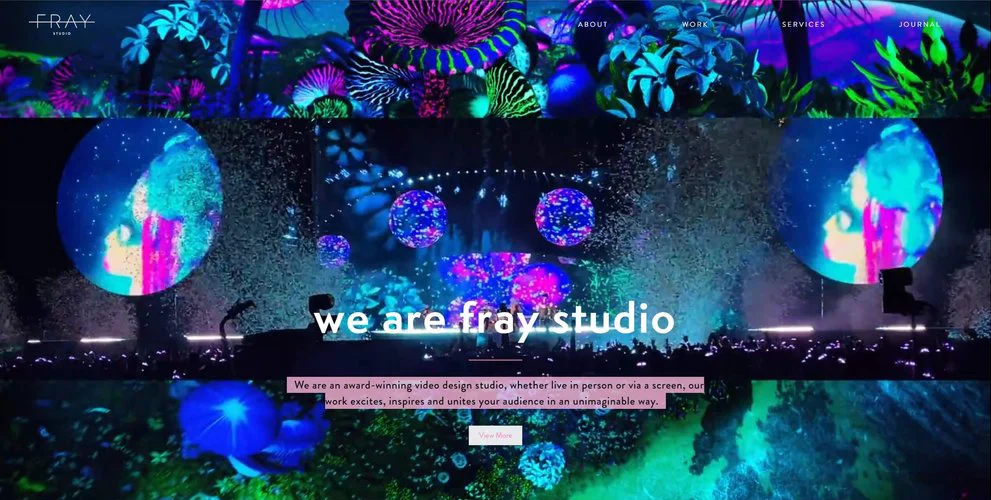
For Y2K web design inspiration, the Wayback Machine on the Internet Archive and the Web Design Museum are excellent resources. The Wayback Machine allows you to browse actual website designs from the Y2K era, while the Web Design Museum showcases screenshots of significant designs from the late 90s to early 2000s. You can also follow the Museum’s Twitter feed for curated selections.
Y2K font and text-based designs
In 2023, we expect more designers to draw inspiration from the fonts and text layouts of the Y2K era. Y2K designs are often more elaborate, with eye-catching elements like mixed fonts and dense text.
The fonts used in Y2K web design were simple, often sans serif or monospaced, and sometimes intentionally pixelated, as seen in Christopher Nelson’s website. Due to slow image loading during the early 2000s, web designs often relied on text-focused layouts with ample white space.
Designer and artist Adam Ho’s portfolio website showcases clear Y2K inspiration with its bold text-on-white design. He enhances visual appeal by combining fonts that contrast with the sectioned layout and pristine background.
Adam uses a bold sans-serif font to emphasise certain elements, paired with light serifs for added visual interest. He also incorporates a touch of cyber aesthetic by utilising a typeface with a slashed zero (such as Terminal or Consolas) for the dates.
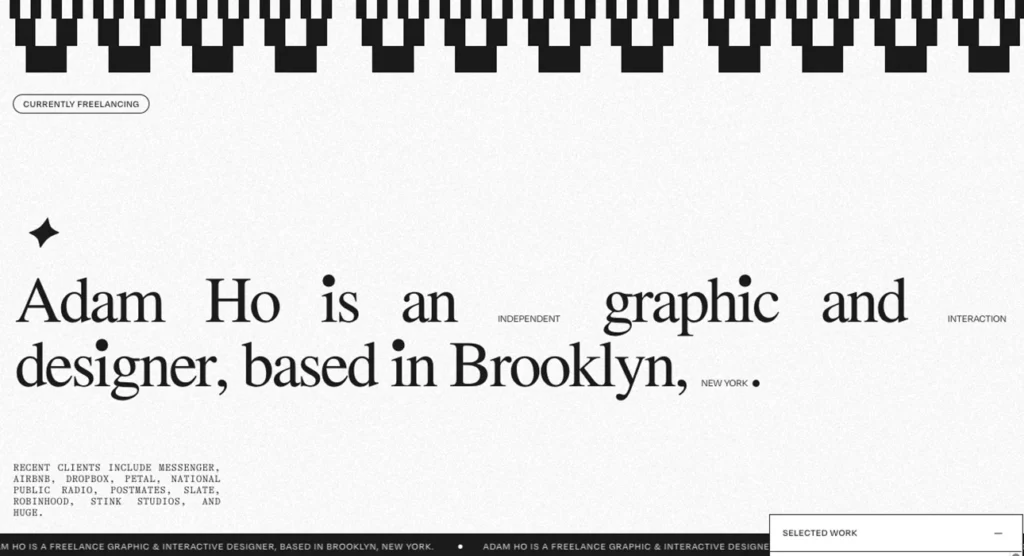
Unique Cursors
Unique cursors are another trend that is gaining popularity in 2023 web design, with designers incorporating custom, hand-drawn cursors into their designs. From quirky illustrations to playful animations, these cursors add a touch of personality and fun to websites.
A standout example of the Y2K trend is Mackenzie Child’s interactive custom cursors on Mac, and his replicated retro site template. Mackenzie’s two cursors – a classic arrow and a pointing finger for links – are humorously oversized and have a cartoonish face that complements the other elements of his design.
Mackenzie embraces the Y2K theme with a grayscale color palette, a prominent boxed layout, and a sans-serif font reminiscent of early software like Apple Lisa and Adobe PageMaker.
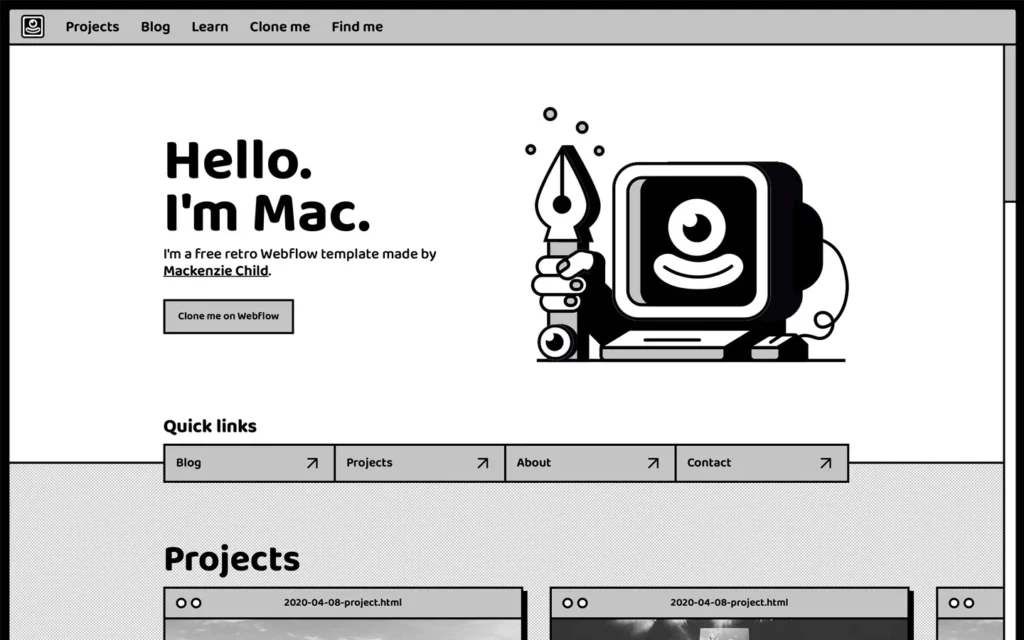
Pixelation
Pixelation is another trend that is inspired by the early days of web design, with designers opting for low-fi, pixelated designs that give a nod to classic 8-bit video games. These designs often feature chunky graphics and bold color palettes, creating a retro, futuristic feel.
2. Custom Typefaces
We predict that custom fonts and hand-drawn lettering will be a popular trend in 2023’s web design. With a focus on text-based designs, more designers are creating unique typefaces and custom lettering for personal or client projects to stand out.
No single design or style will dominate, as designers are free to incorporate their own elements from various sources, such as poster design, graphic novels, real-life materials, or their personal experiences. There are several ways to approach this web design trend, including using font generator tools like BitFontMaker, FontStruct, or Calligraphr to create original fonts, or creating custom lettering graphics with digital illustration tools.
For those with technical skills, there’s the option to digitise physical illustrations and turn them into functional typefaces. These custom font designs will bring a new level of originality to the text-focused design trend.
Now, let’s take a closer look at some of our favourite designs we’ve seen as of late.
Stenciled and screen-printed font designs from Tré Seals
Tré Seals is a popular typographer in 2023, known for his stenciled and screen-printed font designs. These bold, graphic typefaces add a touch of urban edge to websites, and are a great way to create a unique, eye-catching look.
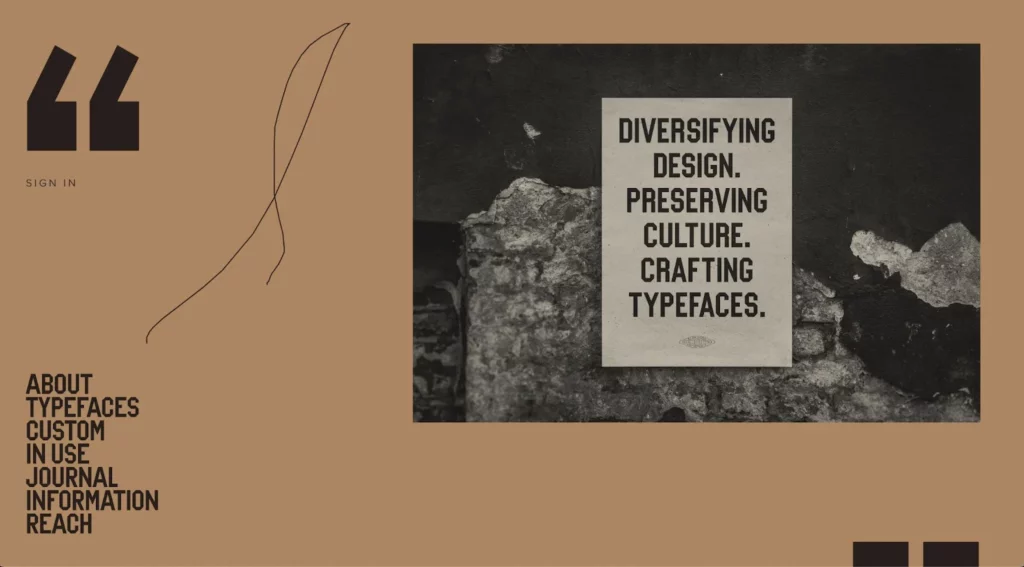
Colorful hand-drawn lettering from Leandro Assis
Leandro Assis is another 2023 trendsetter in the world of typography, known for his colorful hand-drawn lettering. These playful, organic designs bring a sense of warmth and personality to web design, making them a great choice for more personal and creative projects.
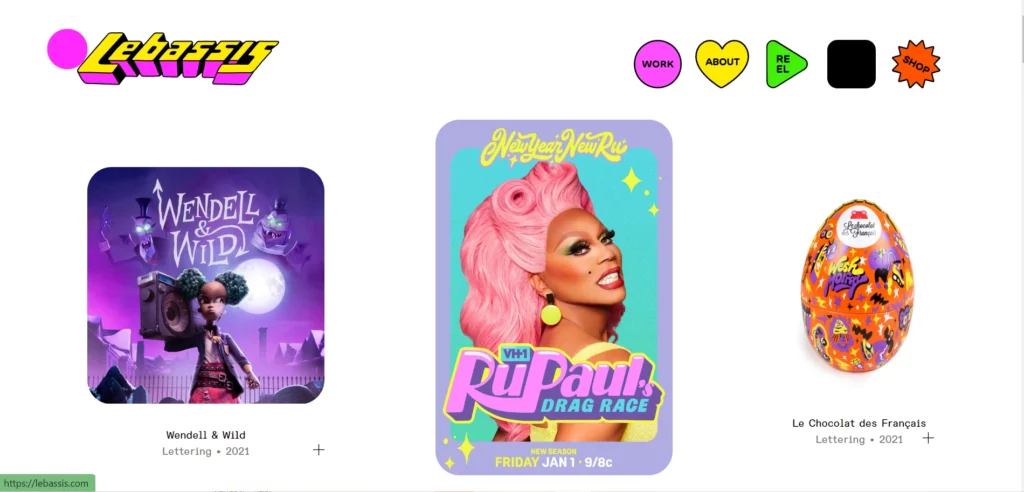
Trompe-l’oeil from Aurelie Maron
Aurelie Maron is a French graphic designer who is making waves in 2023 with her trompe-l’oeil designs. These optical illusion designs create a sense of depth and dimensionality, making them a popular choice for modern websites and web design.
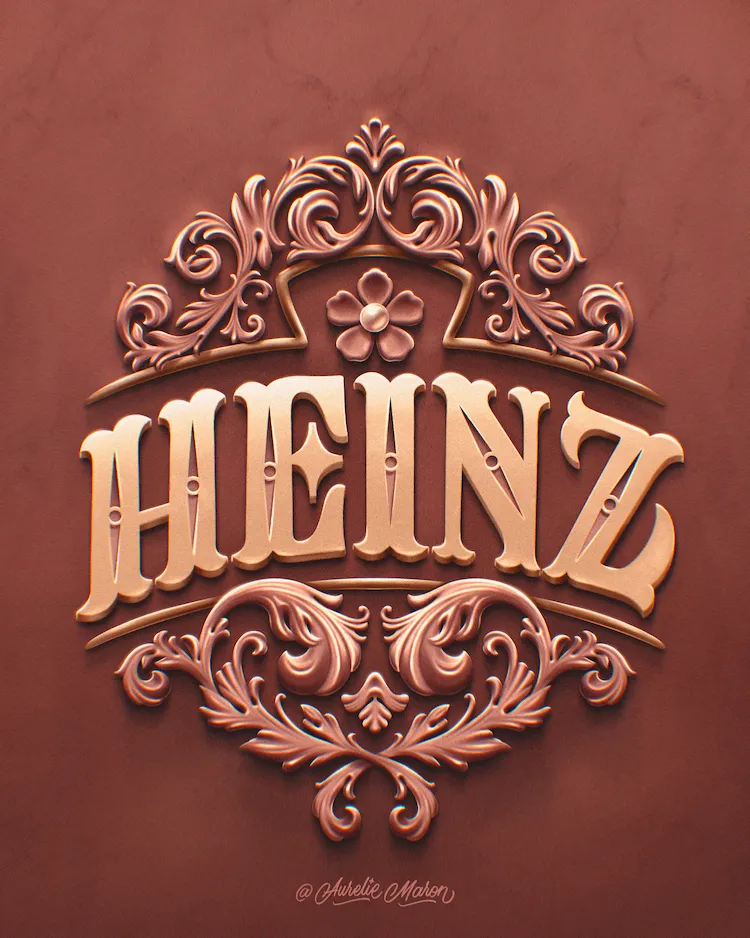
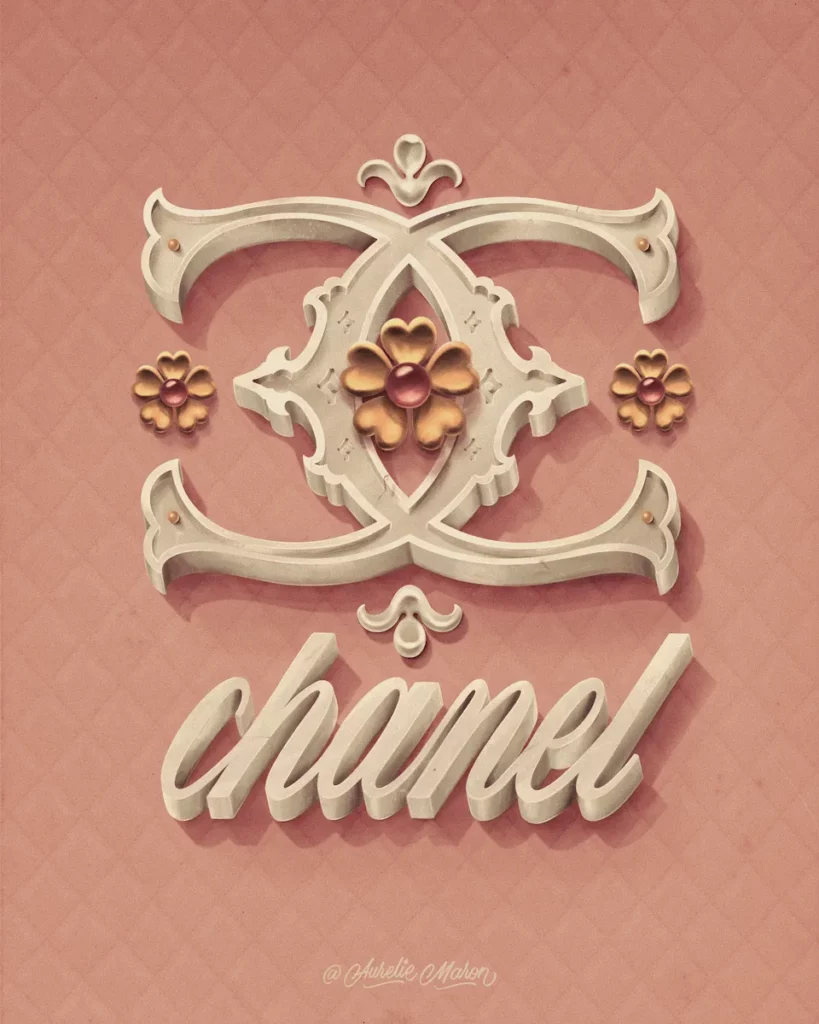
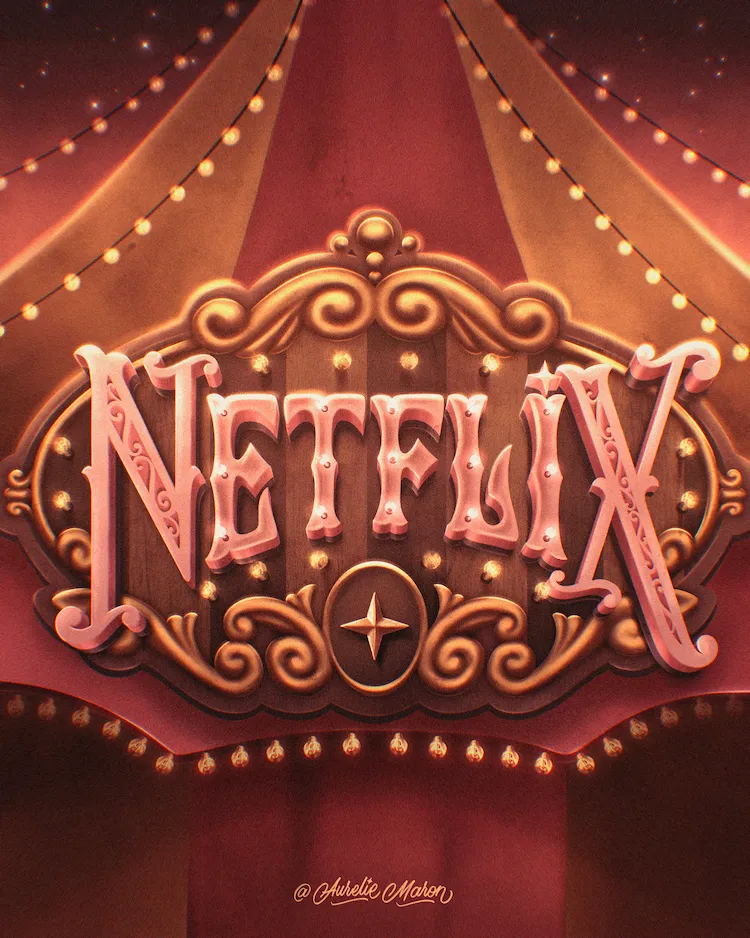
3. Illustrations with dimensionality
The popularity of metaverse has sparked a trend in illustrations that resemble the virtual world. 3D illustrations and Claymorphism are among the most popular styles. Previously, 3D illustration was just a style, but now websites are incorporating more immersive elements, like animations, full-page effects, and multi-layer illustrations, to draw users deeper into the cyber world.
3D illustrations
2023 brings a revival of 3D illustrations in web design. After the dominance of flat illustration styles in recent years, 3D design is now a means to differentiate projects and websites. For a truly modern and trendy approach, consider a full 3D visual experience throughout the site, as demonstrated by Redis Agency‘s website. They incorporated animation in front of the site’s content, making the site even more engaging with the addition of parallax scrolling.
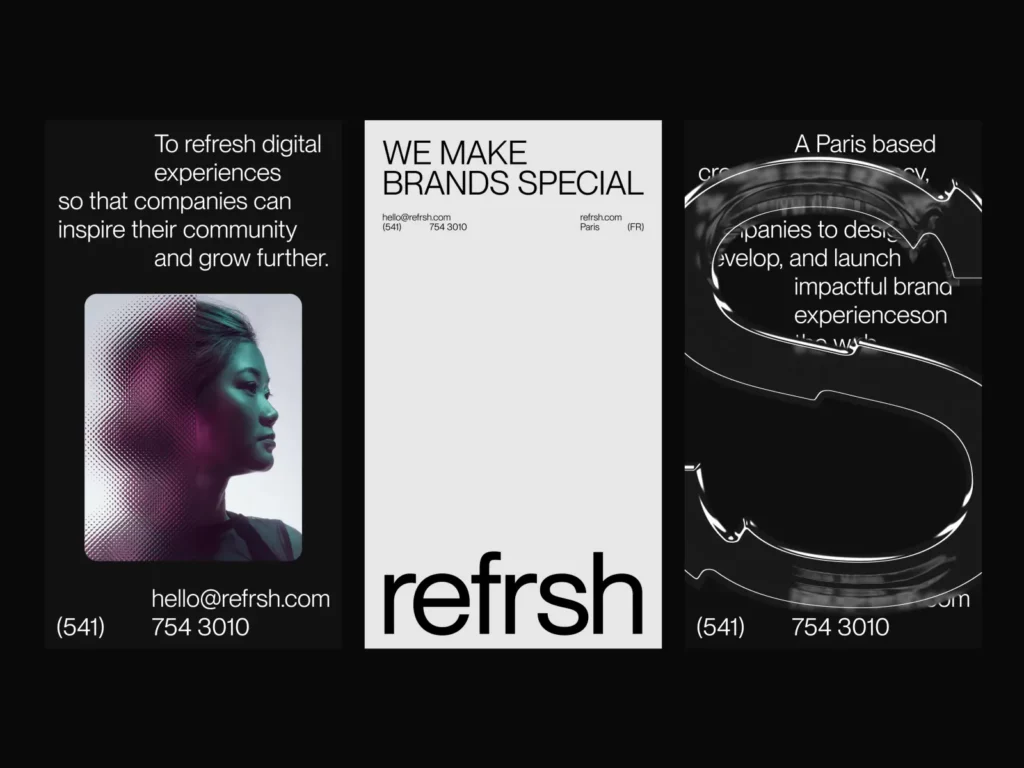
3D image creation has become easier with advancing technology, but even non-3D illustrators can capitalise on this trend. In the coming year, we expect to see more designers creating pre-made 3D libraries that others can utilise to enhance the visual appeal of their websites.
Metaverse
The metaverse is a concept, a digital and interactive space, and a new online realm. Despite being debated, it’s becoming more prominent in people’s minds. As web users become familiar with online spaces and virtual reality, the design style of the metaverse will play a larger role in the visual language of web design in 2023.
The metaverse represents virtual reality and visually, that means a cohesive world is formed by all elements. Instead of just one 3D illustration or element on a webpage, some sites are adopting an all-encompassing 3D style inspired by the metaverse. This includes illustrations, backgrounds, text, and cursors. Interactions and animated effects are also added to make the site more engaging and interactive.
An illustration of this trend is the website of Totem, which incorporates animated effects to create an immersive experience. The designer, Offbrand, used a grainy effect and misty layers to bring together the site content, background, and illustrations.

Claymorphism
Claymorphism provides a unique dynamic experience with illustrations that appear tangible and lifelike. Many web users have a strong emotional connection to claymation effects from films like “Wallace & Gromit” and “Coraline.” In 2023, we anticipate the popularity of claymation-inspired designs, which combine 3D effects with cartoonish human figures that have been trendy in web design in recent years.
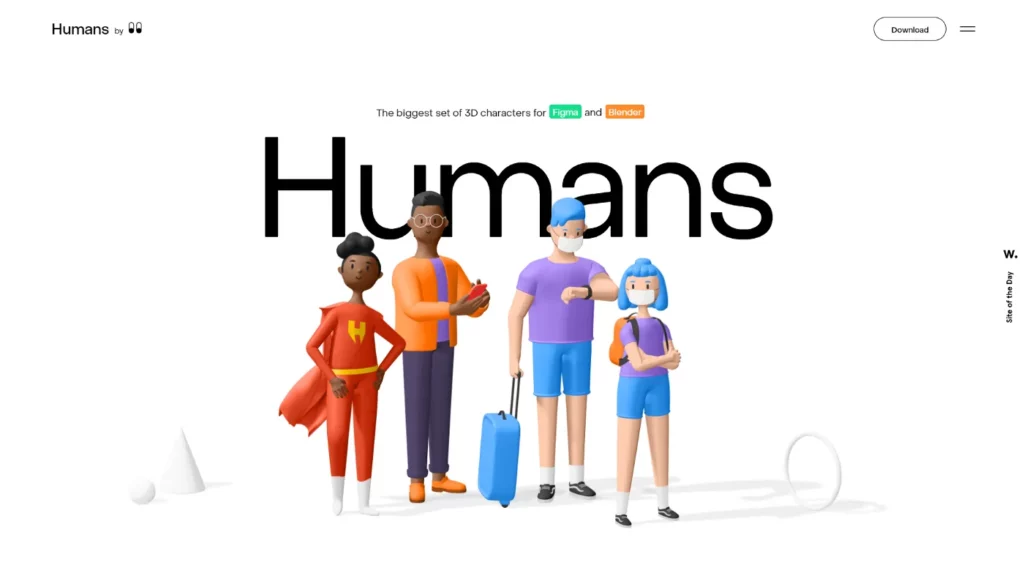
4. “Just for fun” interactions
Designers are increasingly incorporating playful and interactive elements into their websites, giving users the opportunity to engage with the content in a fun and meaningful way. From animations and hover effects, to gamified elements and mini-games, these interactions add a sense of excitement and energy to websites, keeping users engaged and coming back for more.
Fun animations don’t need to be a primary navigation feature to be effective. In fact, they can be more impactful when they’re not. Interactive animations like the Ball Pit or the Love Button are appealing and enjoyable to use without hindering the accessibility of the site.

5. Loading animations
Loading animations were in vogue in the early days of the web but declined for some time. Recently, a growing number of designers started incorporating loading screens into their designs, and this trend will persist into 2023.
The revival of the loading screen is due to the increasing popularity of interactive, animated, and immersive website designs. A loading screen provides another chance to engage with visitors and express your brand through your website. Animations make waiting feel less tedious, reducing user frustration while pages load.
Our favorite example is Antonio Segurado‘s site which utilises a loading animation to introduce Antonio to visitors, creating a warm and straightforward impact.
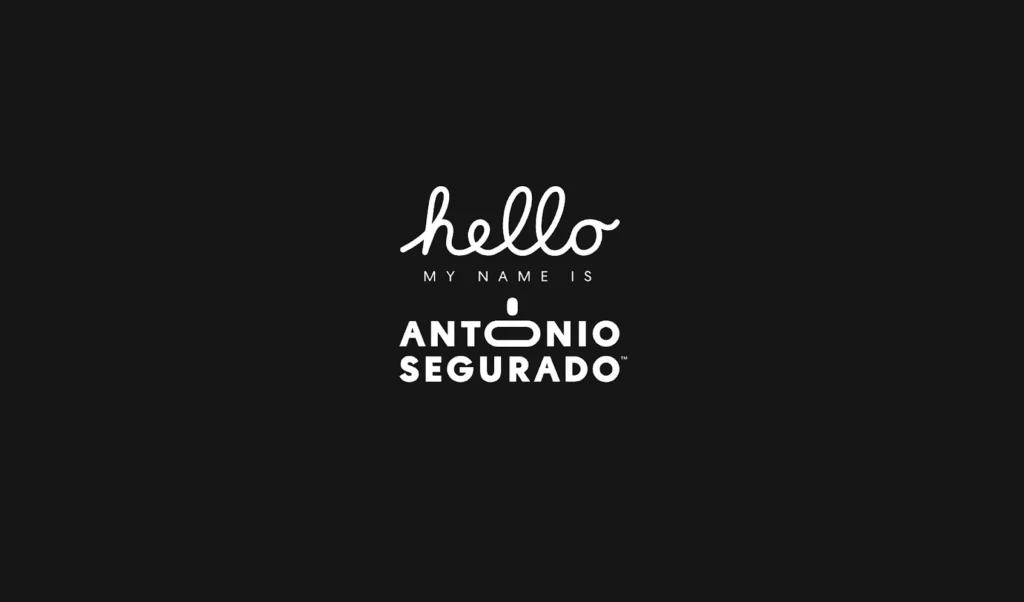
6. Lightweight, more efficient websites
The trend in 2023 is towards websites that are lightweight, quick and optimised for user experience. As the number of users accessing websites on mobile devices or slow networks increases, the need for lightweight websites and web design that minimises waiting time is becoming more important. In the past, designers limited images and graphics to speed up website loading, but with advancements in technology like WebP images and lazy load background videos, it is now possible to add media without compromising user experience. Despite this, it is still important to be mindful of the data size of media files on your website.
7. Collaboration
Collaboration is becoming an increasingly important trend in web design, with designers working together with developers, content creators, and other stakeholders to create cohesive and effective websites. This involves the use of tools and platforms that facilitate communication and collaboration, such as project management software and design systems.
Adobe’s acquisition of Figma in September highlights the growing need for software that enhances digital collaboration in the workplace. Figma is well-regarded for its collaboration features, such as shared prototypes and centralised design assets, and this acquisition foreshadows an increase in digital tools offering similar collaboration functionalities.
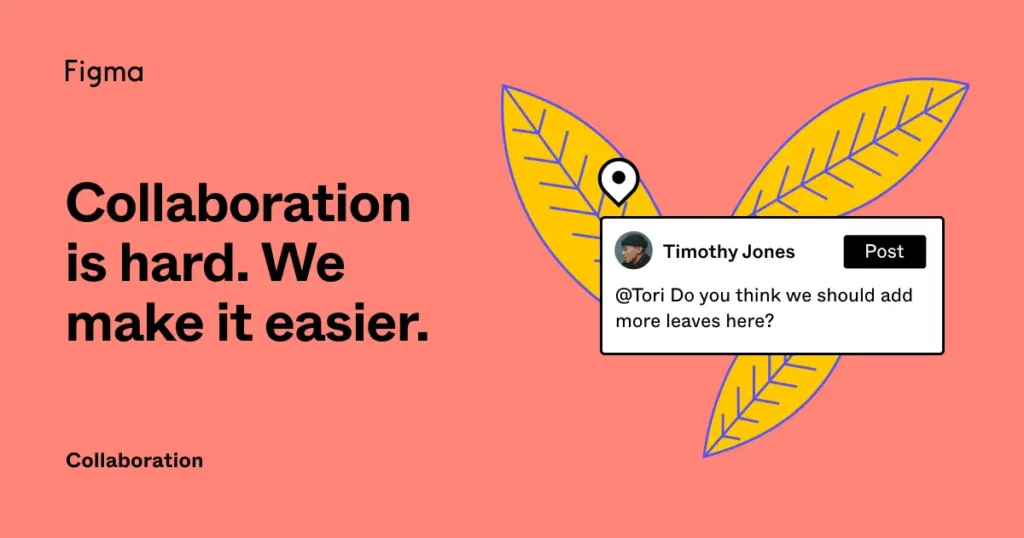
8. Premium content experiences
As we move into 2023, we anticipate that more and more creators and businesses will recognise the benefits of offering memberships, exclusive content, and premium experiences. The Web3 movement, which has gained significant momentum in recent years, is all about decentralising the web. By incorporating gated content into a website, creators can better manage their community and receive compensation for creating valuable content.
Creators will become more empowered by having control over their own content portal, while businesses will seek out premium content and gated memberships as a way to diversify their income stream and increase resilience during economic downturns.
Having a premium content portal or membership feature on your website can make it more valuable and engaging beyond just being a static source of information. This opens up opportunities to create memberships for clients, monetise your templates and designs with subscriptions, or pitch premium content portals to clients, thus enhancing the value of the services you offer.
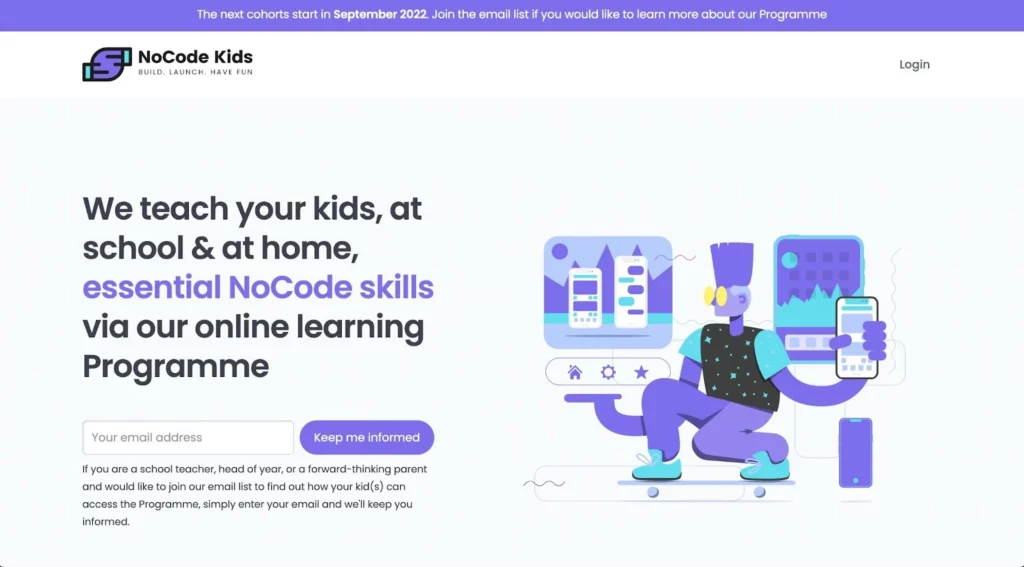
9. Customisable viewing experiences
In 2023, the trend towards personalisation on the web is set to continue, with websites becoming increasingly tailored to meet the needs and preferences of their users. Website building platforms are now providing designers with the tools to enable users to customise various aspects of their website experience, making it more accessible and user-friendly for people with different needs.
The trend towards customisable viewing experiences is a logical progression from the popularity of interactive and gamified websites seen in recent years. People are drawn to websites that are able to accommodate their preferences and designs, providing a more engaging and personalised experience.
Meaningful Micro-Interactions
The return of tooltips is just one step in advancing usability across web design. It continues with purposeful micro animations, which is currently popular.
In 2023, micro animations that have already established a niche will have greater significance and influence. The emphasis will be on user experience, usability, and methods to further enhance the online platform, yet they will still be enjoyable and humorous.
There are various use cases for this strategy in web design:
- They might help consumers navigate a website during their interactions with it.
- They might provide a suggestion about where to go.
- They might make unclear parts clear, facilitating easy and enjoyable project discovery.
- They could deliver visual cues.
- They could make critical navigational components more visible.
- They may make crucial navigation elements more prominent
Think about how the eCommerce industry has already applied it by utilising micro animations to provide a succinct yet dynamic view of the product.
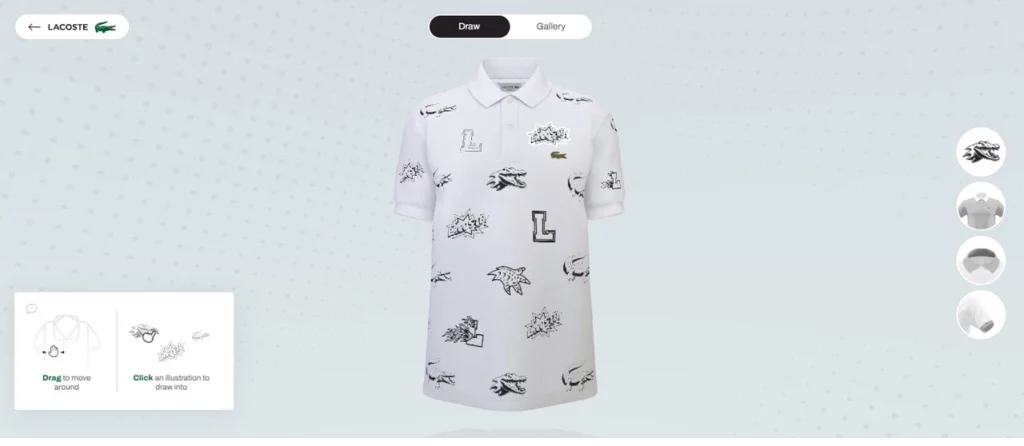
Micro-interactions will continue to be the focus of UX research in an effort to increase the fidelity of human-computer interaction, for purposes beyond emotional design and UI delight. Although they pertain to UI decisions in later stages of a project, core micro-interaction concepts will continue to depend on an intimate understanding of the process flow as well as how user — and system-triggered micro-interactions result in system feedback. Moreover, looking into user psychology, mental mapping and physical product precedents will potentially reveal new opportunities for well-designed and intuitive system feedback.

Conclusion On 2023 Web Design Trends
The web has always been an interactive space, and designers have continually sought to create immersive experiences and interactive games that engage users. What sets 2023 apart is how seamlessly integrated user engagement has become in the web design process. With advanced technology, users can now play an active role in shaping their online experiences, not just in cutting-edge virtual realities, but in the small but meaningful aspects of their daily internet use as well.
As a designer, you can enhance user engagement on your website by incorporating elements of responsiveness, animation, and entertainment in your web design. Your website can be transformed into a bedtime story, an educational resource, a collaborative development platform, or just a fun place to play.
It’s evident that websites have evolved into dynamic, living entities where designers and users continually discover new ways to interact and engage with each other. This is a fascinating way to experience the web and we believe it will only continue to grow in popularity with web design.

